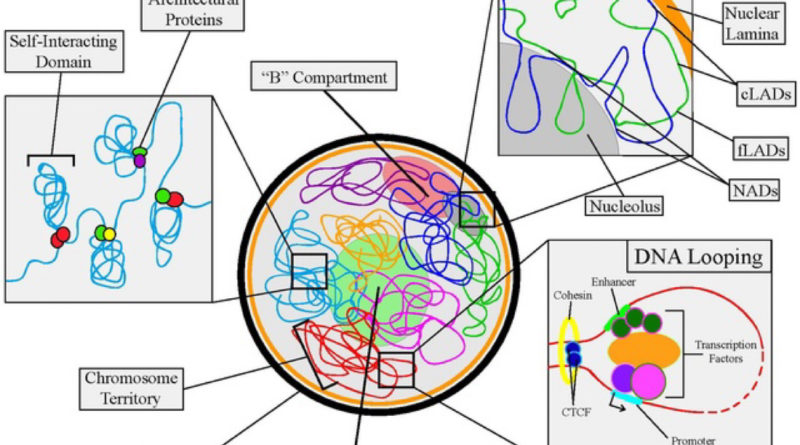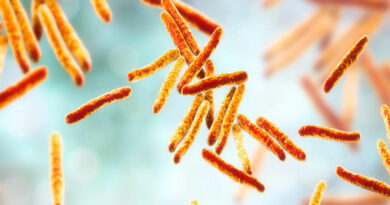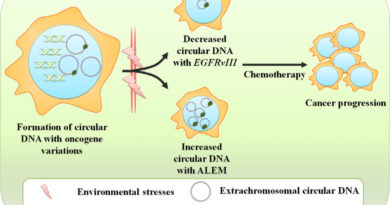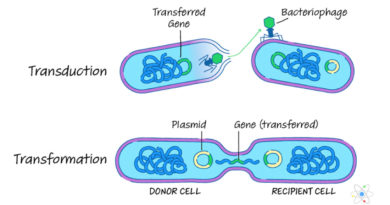Organization Of DNA In Cell
All living cells contain DNA in the form of double helix, its organization differs among cells in the three domains of life.
DNA is organized in the form of a closed circle in all Archaea and most bacteria. This circular double helix DNA is further coiled (twisted) into supercoiled DNA.
In bacteria, DNA is associated with basic protein those help in it’s supercoil nature.
DNA is much more highly organized in eukaryotic chromatin and is associated with a variety of proteins, the most prominent of which are histones. There are five types of histones in almost all eukaryotic cells studied: H1, H2A, H2B, H3 and H4. Eight histone molecules (two each of H2A, H2B, H3 and H4) form an ellipsoid about 11 nm long and 6.5 to 7 nm in diameter. DNA coils around the surface of the ellipsoid approximately 1 ¾ turns or 166 base pairs before proceeding on to the next. Such combination of histones and DNA, or nucleo-protein complex, is called a nucleosome.
Although the Archaea share the procaryotic style of cellular organization with the bacteria, there are some important differences. Thus far, all archaeal genomes examined are circular. Like eukaryotic histones, archaeal histones forms nucleoprotein complex called archaeal nucleosomes.
The structure of archaeal histones and their interaction with DNA strongly suggests that archaeal nucleosomes are evolutionarily similar to the eukaryotic nucleosomes formed by DNA and histones H3 and H4.
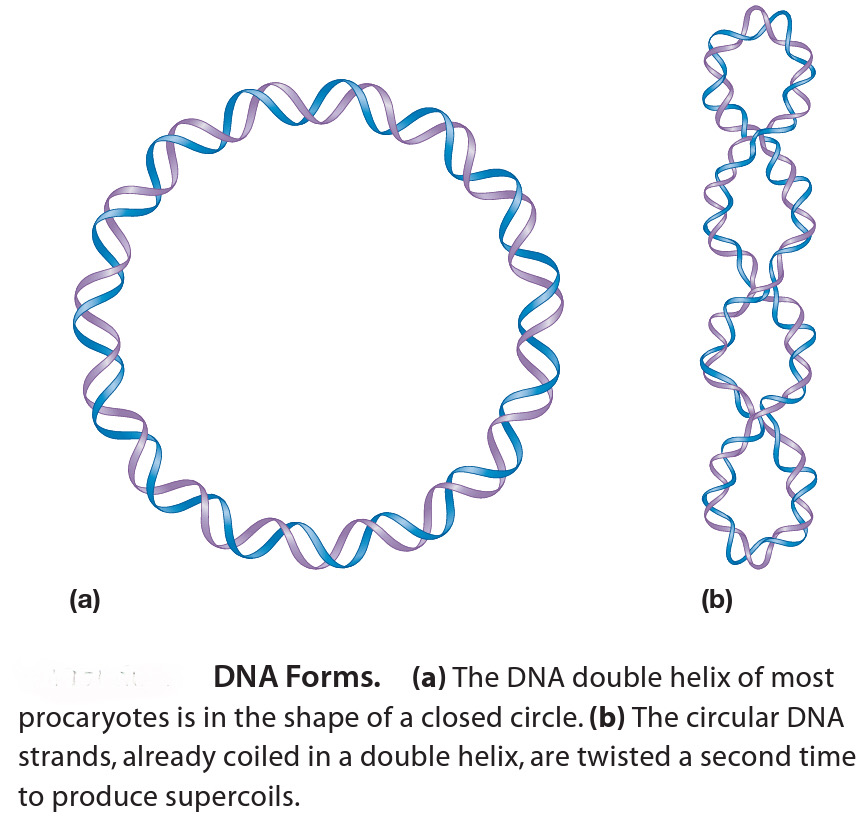
Reference:
Prescott, Microbiology
